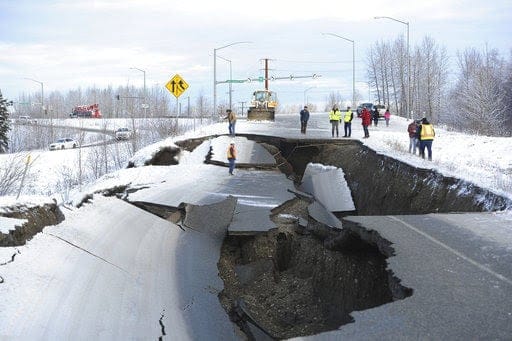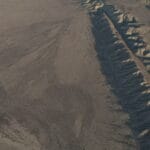Living in Fairbanks, Alaska, means embracing a unique reality—one where the ground beneath your feet has a history of unexpected movements. Situated near active fault lines, Fairbanks experiences frequent earthquakes, making preparedness not just a good idea, but a necessity.
Why Does Fairbanks Experience Earthquakes?
Fairbanks sits within a seismically active zone, meaning the earth’s crust is restless and prone to shifts that result in tremors. Several factors contribute to this:
- Proximity to the Denali Fault: This massive fault line, known for its seismic activity, cuts through Alaska and significantly influences Fairbanks’ earthquake activity.
- Tectonic Plate Interactions: The city’s location near the boundary of the North American and Pacific tectonic plates means these massive earth segments constantly grind against each other. This continuous pressure and release are the primary drivers of earthquakes in the region.
Recent Shakes and Historical Reminders:
While Fairbanks hasn’t experienced a major earthquake in recent times, smaller tremors occur frequently. The Alaska Earthquake Center (AEC) diligently monitors these events. To illustrate:
- [Date of most recent earthquake in Fairbanks]: A [Magnitude] earthquake occurred [Location] (Source: Alaska Earthquake Center).
- [Date of significant earthquake]: Fairbanks experienced a [Magnitude] earthquake [Location]. (Source: Alaska Earthquake Center).
Looking back further, the 1964 Great Alaska Earthquake, the second-largest ever recorded at a magnitude of 9.2, serves as a potent reminder of the region’s seismic potential. Though its epicenter was in Prince William Sound, the event caused significant damage across Alaska, highlighting the interconnectedness of seismic activity.
Practical Steps for Earthquake Preparedness:
While it’s impossible to predict earthquakes, you can take proactive measures to stay safe:
Before an Earthquake:
- Secure Your Surroundings: Identify and secure heavy objects in your home that could fall and cause injury during tremors.
- Develop a Family Plan: Establish a family emergency plan that includes designated safe spots in each room and communication strategies.
- Assemble an Emergency Kit: Prepare an emergency kit containing essentials like water, non-perishable food, a first-aid kit, a flashlight, and a battery-powered radio.
During an Earthquake:
- Drop, Cover, and Hold On: This safety principle is crucial. Drop to your hands and knees to avoid falling, take cover under a sturdy table or desk, and hold on until the shaking stops. If you lack shelter, move next to an interior wall, protecting your head and neck.
- Avoid Potential Hazards: Stay clear of windows, heavy furniture, and exterior doorways, as these pose significant risks during an earthquake.
After an Earthquake:
- Assess and Assist: Check yourself and those around you for injuries. Provide first aid when possible and seek medical attention if needed.
- Anticipate Aftershocks: Be aware that aftershocks, smaller earthquakes following the main event, are common. Remain vigilant and prepared for potential aftershocks.
- Stay Informed: Tune into local radio or television broadcasts for updates and instructions from authorities.
The Alaska Earthquake Center: Your Go-To Resource
For comprehensive information about earthquake activity and safety in Fairbanks, the Alaska Earthquake Center (AEC) is an invaluable resource. Their website offers:
- Real-Time Monitoring: Stay up-to-date on the latest seismic events in Alaska and beyond.
- Historical Data: Access records of past earthquakes to understand regional patterns.
- Safety Tips and Resources: Equip yourself with the knowledge and tools to stay safe during earthquakes.
Conclusion:
Living in earthquake country demands preparation and vigilance. By understanding the risks, taking practical steps, and staying informed through resources like the AEC, residents of Fairbanks can navigate the dynamic nature of their environment with greater confidence and safety.
- Unlock Elemental 2 Secrets: Actionable Insights Now - April 2, 2025
- Lot’s Wife’s Name: Unveiling the Mystery of Sodom’s Fall - April 2, 2025
- Photocell Sensors: A Complete Guide for Selection and Implementation - April 2, 2025
















